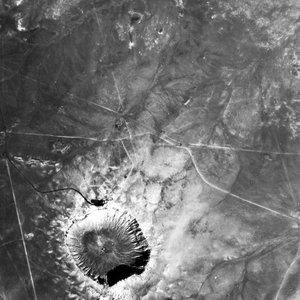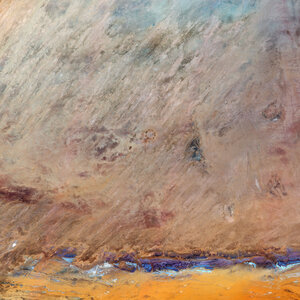Accept all cookies Accept only essential cookies See our Cookie Notice

About ESA
The European Space Agency (ESA) is Europe’s gateway to space. Its mission is to shape the development of Europe’s space capability and ensure that investment in space continues to deliver benefits to the citizens of Europe and the world.
Highlights
ESA - United space in Europe
This is ESA ESA facts Member States & Cooperating States Funding Director General Top management For Member State Delegations European vision European Space Policy ESA & EU Space Councils Responsibility & Sustainability Annual Report Calendar of meetings Corporate newsEstablishments & sites
ESA Headquarters ESA ESTEC ESA ESOC ESA ESRIN ESA EAC ESA ESAC Europe's Spaceport ESA ESEC ESA ECSAT Brussels Office Washington OfficeWorking with ESA
Business with ESA ESA Commercialisation Gateway Law at ESA Careers Cyber resilience at ESA IT at ESA Newsroom Partnerships Merchandising Licence Education Open Space Innovation Platform Integrity and Reporting Administrative Tribunal Health and SafetyMore about ESA
History ESA Historical Archives Exhibitions Publications Art & Culture ESA Merchandise Kids Diversity ESA Brand Centre ESA ChampionsLatest
Space in Member States
Find out more about space activities in our 23 Member States, and understand how ESA works together with their national agencies, institutions and organisations.
Science & Exploration
Exploring our Solar System and unlocking the secrets of the Universe
Go to topicAstronauts
Missions
Juice Euclid Webb Solar Orbiter BepiColombo Gaia ExoMars Cheops Exoplanet missions More missionsActivities
International Space Station Orion service module Gateway Concordia Caves & Pangaea BenefitsLatest
Space Safety
Protecting life and infrastructure on Earth and in orbit
Go to topicAsteroids
Asteroids and Planetary Defence Asteroid danger explained Flyeye telescope: asteroid detection Hera mission: asteroid deflection Near-Earth Object Coordination CentreSpace junk
About space debris Space debris by the numbers Space Environment Report In space refuelling, refurbishing and removingSafety from space
Clean Space ecodesign Zero Debris Technologies Space for Earth Supporting Sustainable DevelopmentLatest
Applications
Using space to benefit citizens and meet future challenges on Earth
Go to topicObserving the Earth
Observing the Earth Future EO Copernicus Meteorology Space for our climate Satellite missionsCommercialisation
ESA Commercialisation Gateway Open Space Innovation Platform Business Incubation ESA Space SolutionsLatest
Enabling & Support
Making space accessible and developing the technologies for the future
Go to topicBuilding missions
Space Engineering and Technology Test centre Laboratories Concurrent Design Facility Preparing for the future Shaping the Future Discovery and Preparation Advanced Concepts TeamSpace transportation
Space Transportation Ariane Vega Space Rider Future space transportation Boost! Europe's Spaceport Launches from Europe's Spaceport from 2012Latest
Earth from Space: Meteor Crater
Thank you for liking
You have already liked this page, you can only like it once!
Ahead of Asteroid Day, the Copernicus Sentinel-2 mission takes us over the Meteor Crater, also known as the Barringer Meteorite Crater.
Zoom in to explore this image at its full 10 m resolution.
Around 50 000 years ago, an iron-nickel meteorite, estimated to be 30-50 m wide, smashed into North America and left a massive hole in what is today known as Arizona. The violent impact created a bowl-shaped hole of over 1200 m across and 180 m deep in what was once a flat, rocky plain.
During its formation, millions of tonnes of limestone and sandstone were blasted out of the crater, covering the ground for over a kilometre in every direction with a blanket of debris. Large blocks of limestone, the size of small houses, were thrown onto the rim.
One of the crater’s main features is its squared-off shape, which is believed to be caused by flaws in the rock which caused it to peel back in four directions upon impact.
The wide perspective of this image shows the crater in context with the surrounding area. The impact occurred during the last ice age, when the plain around it was covered with a forest where mammoths and giant sloths grazed.
Over time, the climate changed and dried. The desert that we see today has helped preserve the crater by limiting its erosion, which makes it an excellent place to learn about the process of impact cratering.
Impact craters are inevitably part of being a rocky planet. They occur on every planetary body in our solar system – no matter the size. By studying impact craters and the meteorites that cause them, we can learn more about the processes and geology that shape our entire solar system.
Over the past two decades, ESA has tracked and analysed asteroids that travel close to Earth. ESA’s upcoming Flyeye telescopes will survey the sky for these near-Earth objects, using a unique compound eye design to capture wide-field images, which will enhance the detection of potentially hazardous asteroids.
ESA’s Hera spacecraft, launching later this year, will closely explore asteroids and improve our understanding of these celestial bodies and help us better prepare for potential future asteroid deflection efforts.
-
CREDIT
contains modified Copernicus Sentinel data (2024), processed by ESA -
LICENCE
CC BY-SA 3.0 IGO or ESA Standard Licence
(content can be used under either licence)

HRC image of Meteor Crater, Arizona, USA

Earth from Space: Australian crater

Tenoumer Crater, Mauritania

Roter Kamm impact crater















 Germany
Germany
 Austria
Austria
 Belgium
Belgium
 Denmark
Denmark
 Spain
Spain
 Estonia
Estonia
 Finland
Finland
 France
France
 Greece
Greece
 Hungary
Hungary
 Ireland
Ireland
 Italy
Italy
 Luxembourg
Luxembourg
 Norway
Norway
 The Netherlands
The Netherlands
 Poland
Poland
 Portugal
Portugal
 Czechia
Czechia
 Romania
Romania
 United Kingdom
United Kingdom
 Slovenia
Slovenia
 Sweden
Sweden
 Switzerland
Switzerland

























